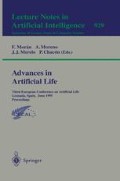Abstract
How similar are the engineering principles of artificial and natural machines? One way to approach this question is to compare in detail the basic functional components of living cells and human-made machines. Here, we provide some basic material for such a comparison, based on the analysis of functions for a few thousand protein molecules, the most versatile functional components of living cells. The composition of the genomes of four best known model organisms is analyzed and three major classes of molecular functions are defined: energy-, information- and communication-related. It is interesting that at the expense of the other two categories, communication-related coding potential has increased in relative numbers during evolution, and the progression from prokaryotes to eukaryotes and from unicellular to multi-cellular organisms. Based on the currently available data, 42% of the four genomes codes for energy-related proteins, 37% for information-related proteins, and finally the rest 21% for communication-related proteins, on average. This subdivision, and future refinements thereof, can form a design principle for the construction of computational models of genomes and organisms and, ultimately, the design and fabrication of artificial organisms.
Preview
Unable to display preview. Download preview PDF.
References
Adams MD, Kerlavage AR, Fields C & Venter JC (1993). 3,400 new expressed sequence tags identify diversity of transcripts in human brain. Nature Genetics 4: 256–267.
Bairoch A & Boeckmann B (1991). The Swiss-Prot protein sequence databank. Nucleic Acids Research 19: 2247–2249.
Bork P, Ouzounis C, Casari G, Schneider R, Sander C, Dolan M, Gilbert W & Gillevet PM (1995). Exploring the Mycoplasma capricolum genome: a small bacterium reveals its physiology. Mol. Microblol. in press.
Bork P, Ouzounis C & Sander C (1994). From genome sequences to protein function. Curr. Opin. Struct. Biol. 4: 393–403.
Bork P, Ouzounis C & Sander C (1995). Yeast chromosome VIII: identification of novel translation-associated protein families as inferred from bacterial sequences. Submitted.
Bork P, Ouzounis C, Sander C, Scharf M, Schneider R & Sonnhammer E (1992a). Comprehensive sequence analysis of the 182 ORFs of yeast chromosome III. Protein Sci. 1: 1677–1690.
Bork P, Ouzounis C, Sander C, Scharf M, Schneider R & Sonnhammer E (1992b). What's in a genome? Nature (London) 358: 287–287.
Burks AW (1970). Essays on cellular automata. University of Illinois Press, Urbana.
Dujon B, Alexandraki D & al. (1994). Complete DNA sequence of yeast chromosome XI. Nature (London) 369: 371–378.
Dujon B, Bork P, Valencia A, Ouzounis C & al. (1995). Analysis of the ORFs of yeast chromosome XI. Yeast in press.
Feldmann H, Aigle M & al. (1994). Complete DNA sequence of yeast chromosome II. EMBO J 13: 5795–5809.
Holland JH (1975). Adaptation in natural and artificial systems. University of Michigan Press, Ann Arbor.
Johnston M, Andrews S & al. (1994). Complete nucleotide sequence of Saccharomyces cerevisiae chromosome VIII. Science 265: 2077–2082.
Kampis G (1991). Self-modifying systems in biology and cognitive science: a new framework for dynamics, information and complexity. Pergamon Press, Oxford.
Kauffman SA (1993). The origins of order: self-organization and selection in evolution. Oxford University Press, New York.
Koonin EV, Bork P & Sander C (1994). Yeast chromosome III: new gene functions. EMBO Journal 13: 493–503.
Langton CG (1984). Self-reproduction in cellular automata. Physica 10D: 135–144.
McCulloch W & Pitts W (1943). A logical calculus of the ideas immanent in nervous activity. Bulletin of Mathematical Biophysics 5: 115–123.
Mitchell M, Forrest S & Holland JH (1992). The royal road for genetic algorithms: fitness landscapes and GA performance. In: Toward a practice of autonomous systems — Proceedings of the 1st European Conference on Artificial Life (Varela FJ & Bourgine P, eds.), pp. 245–254, Paris, MIT Press.
Oliver SG, van der Aart QJM & al. (1992). The complete DNA sequence of yeast chromosome III. Nature (London) 357: 38–46.
Orengo CA, Jones DT & Thornton JM (1994). Protein superfamilies and domain superfolds. Nature (London) 372: 631–634.
Ouzounis C, Valencia A, Bork P & Sander C (1995). Functional composition in three yeast chromosomes. Submitted.
Ouzounis CA (1988). The mathematics of nucleic acid sequences: stochastic analyses, pattern recognition, automata theory and fundamental problems in molecular evolution. M. Sc. Thesis, Department of Computer Science, University of York.
Packard NH & Wolfram S (1985). Two-dimensional cellular automata. J. Stat. Phys. 38: 901–946.
Reggia JA, Armentrout SL, Chou H-H & Peng Y (1993). Simple systems that exhibit self-directed replication. Science 259: 1282–1287.
Riley M (1993). Functions of the gene products of Escherichia coli. Microbiol. Rev. 57: 862–952.
Scharf M, Schneider R, Casari G, Bork P, Valencia A, Ouzounis C & Sander C (1994). GeneQuiz: a workbench for sequence analysis. In: Proceedings of the 2nd International Conference on Intelligent Systems for Molecular Biology (ISMB94) (Altman R, Brutlag D, Karp P, Lathrop R & Searls D, eds.), pp. 348–353, Stanford, AAAI Press.
Sims K (1992). Interactive evolution of dynamical systems. In: Toward a practice of autonomous systems — Proceedings of the 1st European Conference on Artificial Life (Varela FJ & Bourgine P, eds.), pp. 171–178, Paris, MIT Press.
Wolfram S (1984). Cellular automata as models of complexity. Nature (London) 311: 419–424.
Author information
Authors and Affiliations
Editor information
Rights and permissions
Copyright information
© 1995 Springer-Verlag Berlin Heidelberg
About this paper
Cite this paper
Ouzounis, C., Valencia, A., Tamames, J., Bork, P., Sander, C. (1995). The functional composition of living machines as a design principle for artificial organisms. In: Morán, F., Moreno, A., Merelo, J.J., Chacón, P. (eds) Advances in Artificial Life. ECAL 1995. Lecture Notes in Computer Science, vol 929. Springer, Berlin, Heidelberg. https://doi.org/10.1007/3-540-59496-5_347
Download citation
DOI: https://doi.org/10.1007/3-540-59496-5_347
Published:
Publisher Name: Springer, Berlin, Heidelberg
Print ISBN: 978-3-540-59496-3
Online ISBN: 978-3-540-49286-3
eBook Packages: Springer Book Archive

